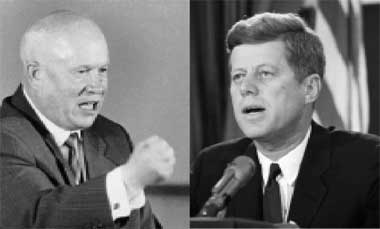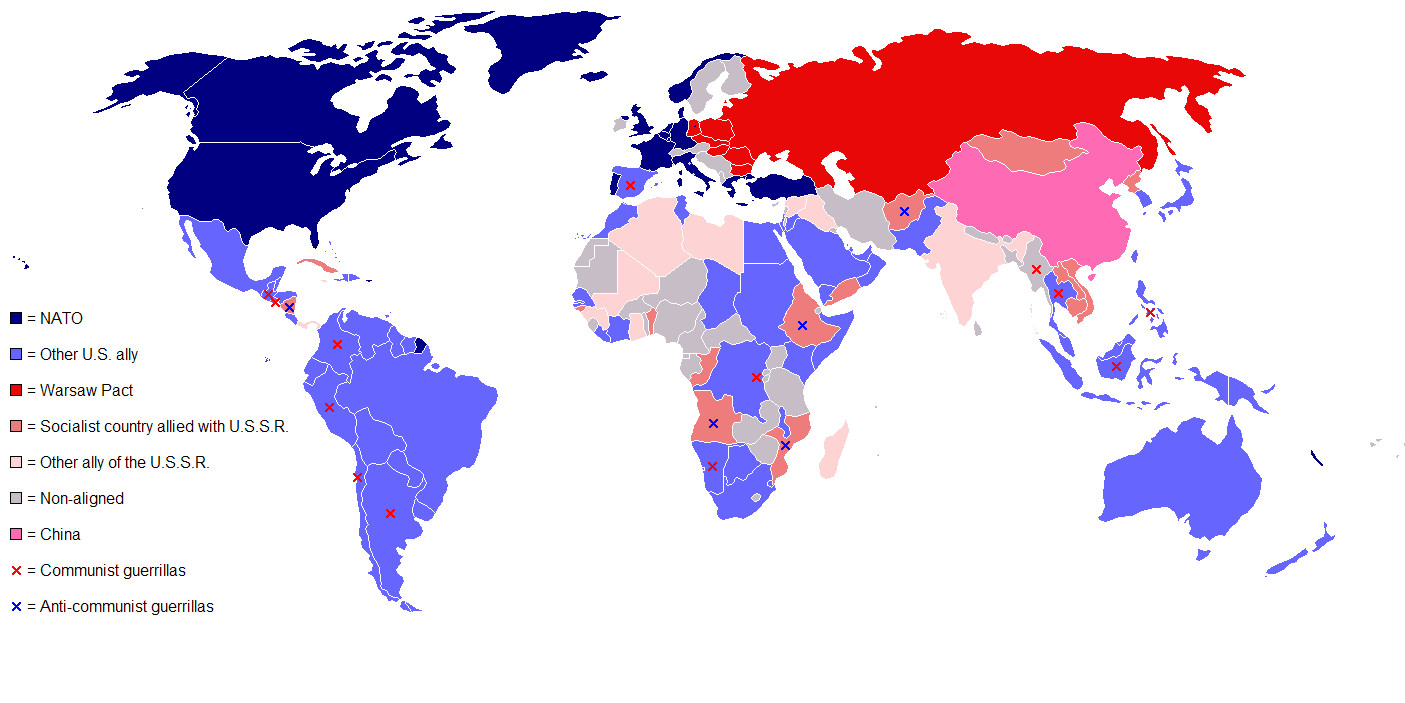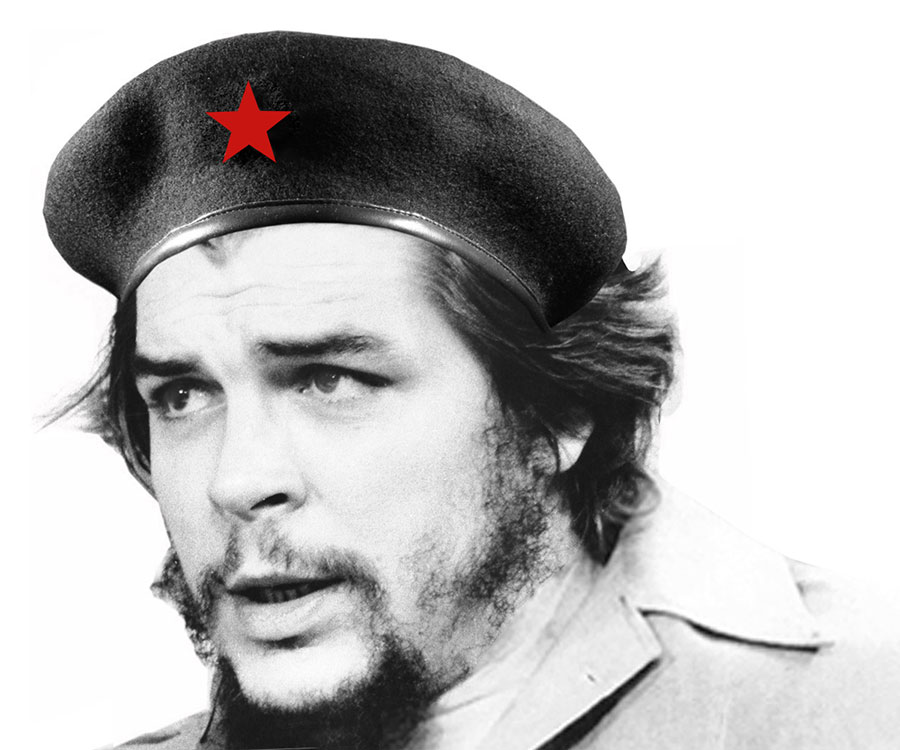The Cold War at America’s Back Door
CUBA MISSILES CRISIS AND FIDEL CASTRO
The Cuban Missile Crisis was the most direct and dangerous standoff between the United States and the Soviet Union during the Cold War. This moment in the early 1960s was when the two superpowers came closest to nuclear conflict. The USA discovered the Soviet Union helping Cuba economically and with strong military presence on the island that is just 90 miles South of Florida. The purpose for the Soviet interference was to bring atomic nuclear missiles to Cuba just in case the US gets in a nuclear conflict with Soviet Union. One reason the Soviet Union gave atomic bombs to Cuba because Cuba is close enough to USA.
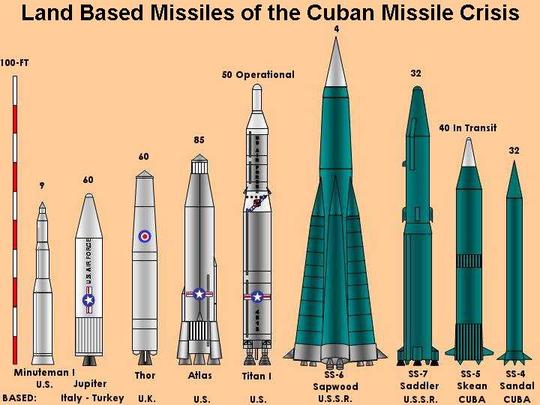
During the Cuban Missile Crisis, leaders of the U.S. and the Soviet Union engaged in a tense, 13-day political and military standoff in October 1962 over the installation of nuclear armed Soviet missiles on Cuba, just 90 miles from U.S. shores. In a TV address on October 22, 1962, President John Kennedy (1917-63) notified Americans about the presence of the missiles, explained his decision to enact a naval blockade around Cuba and made it clear the U.S. was prepared to use military force if necessary to neutralize this perceived threat to national security. Following this news, many people feared the world was on the brink of nuclear war .
After a 13-day standoff, Soviet leader Nikita Khrushchev agreed to remove the nukes against the wishes of Castro, who was left out of the negotiations. In return, U.S. President John F. Kennedy publicly consented not to invade Cuba and privately consented to take American nuclear weapons out of Turkey.
The above video is showing the USA and the Navy in the form of propaganda. (information, ideas, or rumors deliberately spread widely to help or harm a person, group, movement, institution, nation, etc) The dissemination of propaganda as a political strategy.
The information below shows us USA had plans to put missiles in Turkey and Russia gave back little of their own medicine.
The historian Philip Nash’s elegant 1997 study, The Other Missiles of October—Kennedy’s deployment of the Jupiter missiles “was a key reason for Khrushchev’s decision to send nuclear missiles to Cuba.” Khrushchev reportedly made that decision in May 1962, declaring to a confidant that the Americans “have surrounded us with bases on all sides” and that missiles in Cuba would help to counter an “intolerable provocation.” Keeping the deployment secret in order to present the U.S. with a fiat accomplish, Khrushchev may very well have assumed America’s response would be similar to his reaction to the Jupiter missiles—rhetorical denouncement but no threat or action to thwart the deployment with a military attack, nuclear or otherwise. (In retirement, Khrushchev explained his reasoning to the American journalist Strobe Talbot: Americans “would learn just what it feels like to have enemy missiles pointing at you; we’d be doing nothing more than giving them a little of their own medicine.”)-The Atlantic 2013 the real Cuba missile crisis
In Latin America, Cuba was the biggest threat to the United States and also influenced revolutions with all Latin America, as my country of origin El Salvador.
I was born after the Civil war ended, thank God I did not live the war, my parents lived part of the civil war and my grandfather lived it all. The war occurred between communists and nationalists, the Communists were poor people fighting for their rights and the Nationalists were government people, military aided by the Government of the USA.

And that war provoked that many people emigrated to other places for security, as an example towards the United States, and later the war left as a result criminal groups, maras, gangs, among other groups.
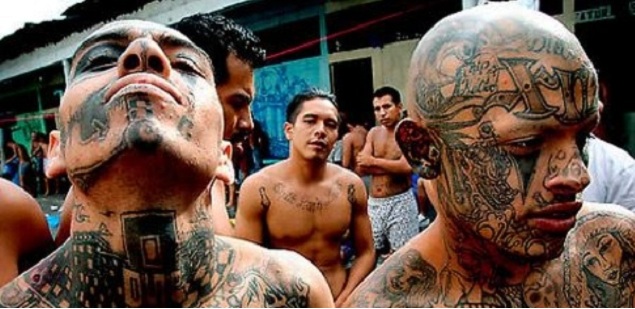
And that’s why my country to my point of view still in war, and people seek better lives, I hope that someday all that will end.
El Salvador, which shares a border with Guatemala, soon felt the tremors of political change. According to historian Joaquin Chávez, when a reformist junta took power in El Salvador in 1960, Washington feared the new government would not be strong enough to contain the Cuban-inspired left and encouraged a right-wing military coup. The military putsch effectively eliminated the political center and established the foreground for the civil war that devastated the country from 1980 to 1992. “Prior to this, there had been a number of coups in the 1940s, but they were intra-elite conflicts,” Chávez explains. “After the coup of 1960, the whole restructuring of the state apparatus responded directly to U.S. Cold War politics, which basically created a counter-insurgent state.”http://nacla.org/news/end-era-cold-war-el-salvador-and-cuba
The cold war began in 1947 the open yet restricted rivalry that developed after war world II between the Unites State and the Soviet Union and their respective allies. The Cold War was waged on political, economic, and propaganda fronts and had only limited recourse to weapons. It ended officially in 1991 The fall of the Berlin Wall. The shredding of the Iron Curtain. The cold war affected the whole world. The main antagonists in the Cold War were the United States and the Soviet Union. However, the Cold War ended up affecting practically every country in the world in some way. Some countries were affected by having wars erupt within them.
This map shows how the cold war affected the world and become civil wars
This person is of one responsible to spread communism in Latin America. “Che” Guevara was Born in Rosario, Argentina, in 1928, studied medicine before traveling around South America, observing conditions that spurred his Marxist beliefs. This link shows how Che Guevara spread communism in Latin America.
Che Guevara Determined to spread the revolution to other parts of Latin America, he created a guerrilla army in Bolivia where he attempted to implement the foco theory of guerrilla struggle. The guerrillas suffered a number of debilitating setbacks and defeats at the hands of the U.S.-trained and supported Bolivian army, which culminated in his capture and subsequent execution.The political situation in Latin America has changed in many regards since Guevara took up armed struggle and many parties and movements have found electoral success in the political arena. On the streets of Latin America young and old alike wave flags with the famous image of Guevara, a symbol of resistance, determination and hope for a better world. Barrientos and his ilk hoped that the ideals of Guevara would die along with him but his execution only served to further fuel his almost-mythical legacy.
who was Fidel Castro: Fidel Alejandro Castro Ruiz (born August 13, 1926, near Birán, Cuba—died November 25, 2016, Cuba), political leader of Cuba (1959–2008) who transformed his country into the first communist state in the Western Hemisphere.
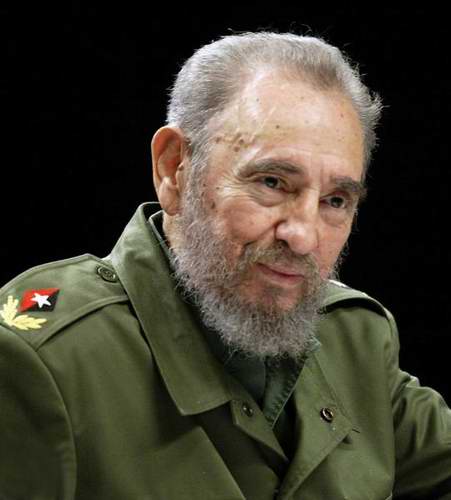
Lets’ talk about Castro and how soviet union allied with Cuba for possible attack against the United States.
Castro enrolled as a law student at the University of Havana. While there, he became interested in politics, joining the anti corruption Orthodox Party and participating in an aborted coup attempt against the brutal Dominican Republic dictator Rafael Trujillo.
Castro publicly declared himself a Marxist-Leninist in late 1961. By that time, Cuba was becoming increasingly dependent on the Soviet Union for economic and military support. In October 1962, the United States discovered that nuclear missiles had been stationed there, setting off fears of a World War III.
Day that U.S. intelligence people analyzing spy plane data find out that the Soviets were building medium range missile sites in Cuba.
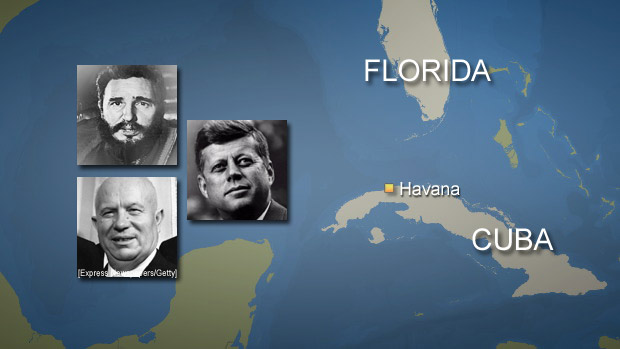
This carton shows John F. Kennedy and Khrushchev, the Cuba missile crisis was a showdown that brought the two nuclear superpowers to the brink of war. q=cuban+missile+crisis&safe=strict&source=lnms&tbm=isch&sa=X&ved=0ahUKEwi2yMDrgp3UAhVs6IMKHaRACN0Q_AUIBigB&biw=1366&bih=597&dpr=1#imgrc=Lsmj_tcMa_EwyM:&spf=1496333258722
Major strategies of the cold war.
Espionage: Fearing the enemy might be gaining the advantage, each side spied on the other.
Brinkmanship: The policy of brinkmanship meant going to the brink of war to make the other side back down.
Deterrence( The action of discouraging an action or event through instilling doubt or fear of the consequences)nuclear missiles remain the main deterrence against possible aggression.
Multinational alliance: The gain the support of others nations, both the Soviet Union and the United states entered into alliance.
Proxy Wars: indirect wars fought globally through the funding and support of the Soviet and Western superpowers. Ex. Vietnam, The Salvadoran Civil War
In 2015, US and Cuban officials announced that they had agreed terms of peace of relations between the two nations, with mutual embassies and missions in order to leave the tense and open countries with each other.
Castro died on November 25, 2016, at the age of 90. His death was announced on state television and later confirmed by his brother Raúl. Castro will be laid to rest in the city of Santiago Cuba.
Sources:
World History text book page ( 983)
http://www.history.com/topics/cold-war
http://www.history.com/topics/cold-war/cold-war-history
https://www.jfklibrary.org/JFK/JFK-in-History/Cuban-Missile-
Crisis.aspxhttps://www.wyzant.com/resources/lessons/history/hpol/jfk/Cuban

